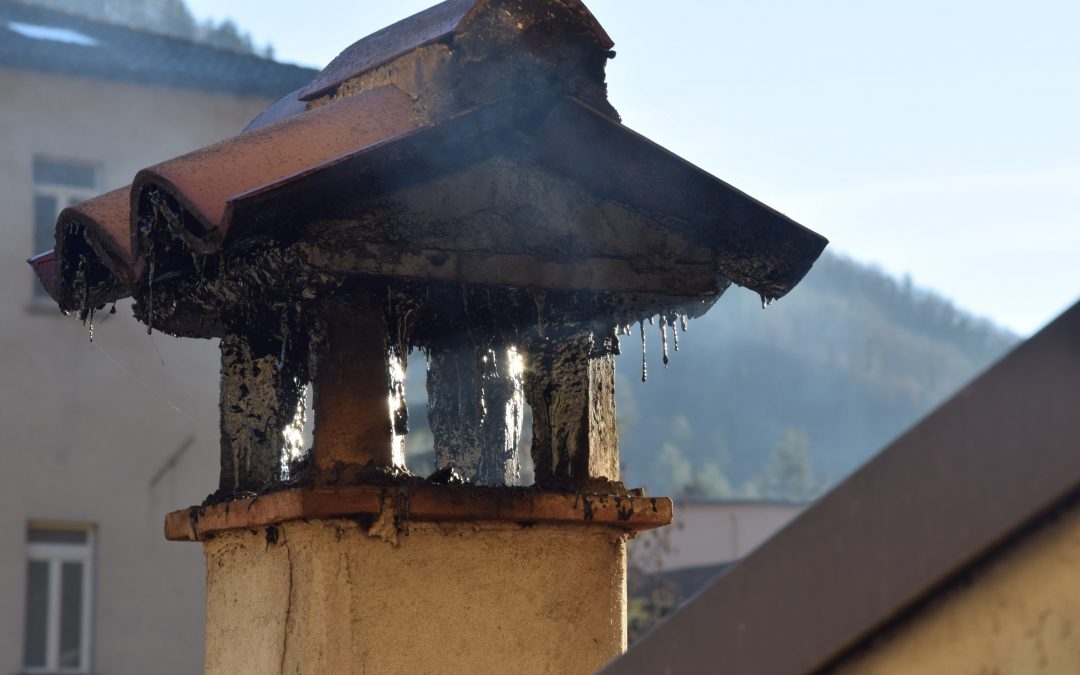A wood-burning fireplace is the epitome of home. Gas-powered and gel fireplaces have their advantages, sure, but only a true wood-burning fireplace, with its deep crackle and flickering orange embers, can evoke a sense of home in a person’s imagination.
Alas, all good things come with a price. A sooty, foul-smelling home interior can result from a chimney that reluctantly draws smoke. A chimney fire is a frightening occurrence that can take place if your chimney is not properly maintained.
The cause of your chimney lighting up? A dirty chimney. Knowing when and how to clean your chimney is the key to avoiding dangerous fires.
How Does A Chimney Get Dirty?
Chimney fires start when creosote from wood smoke condenses within chimneys and catches fire. Chimney fires can exceed 2,000 degrees Fahrenheit, according to the Chimney Safety Institute of America (CSIA), which is hot enough to break masonry chimney liners and eventually start a fire in the surrounding wood framing.
Cleaning a chimney regularly will help to minimize the chance of a chimney fire, but even if you decide to clean the chimney yourself, you should still get it inspected by a professional annually. A professional will look for any creosote build-up, as well as blockage, destruction, and structural issues in your chimney.
When Should You Clean Your Chimney
Chimney cleaning should be carried out in the early autumn. If you hire a chimney sweep, you can expect a fast turnaround if you schedule them earlier in the season, preferably in the summer. Late summer is ideal for self-cleaning because you can rely on a sunny, healthy roof and mild weather to help you get the job done.
In addition to routine cleanings, you can clean your chimney if any of the following conditions exist:
- Soot and creosote appear to fall into the firebox. during one of your fire burning sessions
- Creosote with a honeycomb texture accumulates. on the inside of the chimney
- Creosote is thicker than a quarter-inch.
- You use a lot of fake logs in your fire.
- You burn firewood that is green or otherwise unseasoned.
- You’re a big fan of the fireplace and use it incessantly
How to Clean Your Chimney
Although having the chimney examined by a professional chimney cleaner in Vanacouver from a chimney cleaning company is a good idea, serious DIYers can do some maintenance on their own by following these steps:
- Take a close look at the inside of the flue 9the lining of your chimney). You would be able to look up from the fireplace with a flashlight or through the clean out with a flashlight and mirror to check the chimney from the bottom.
- However, the best view is from above. You’ll need to be able to use ladders to be on a roof securely and comfortably to do this since you’ll need to be above the chimney looking down.
- Remove the chimney cap and shine a torch into the flue to see what’s going on inside.
- Look for damage to the flue and the accumulation of Creosote which is black flaky material.
- If the creosote is discovered, the chimney should be cleaned. If you see any sign of damage, you’ll need to hire a professional who is familiar with the ways to help you fix it.
Cleaning with a Chimney Brush
Procure a chimney cleaner brush that is the right size and shape for your flue, as well as enough extension rods to run the length of the flue (rods come in 4-, 5-, and 6-foot lengths). Using a metal brush on masonry flues and a poly brush on stainless steel flues.
Once you have the Brush, follow these steps:
- Close the wood stove door or cover the fireplace opening with plastic.
- Thread on the first rod from above, with the damper open and the chimney cap removed.
- Push the brush down into the flue, scrubbing up and down as you go.
- Scrubbing can be repeated by adding more rod parts as required and repeating the process until you hit the bottom.
- Examine the interior of the chimney after you take the brush out to ensure that all creosote has been removed. If there is still creosote visible, go over the steps again.
- Lastly, use a shop vacuum to clear all soot and creosote that dropped into the lower areas until the flue has been cleaned.
That is what we call the chimney cleaning 101. If you want more tips such as chimney cleaning 101 please follow our blog posts. Give Us A Yelp Review!
Reach out to us and well be able to take care of everything for you & for any other cleaning needs or junk removal, reach out to our sister company Cleaning Maid.

